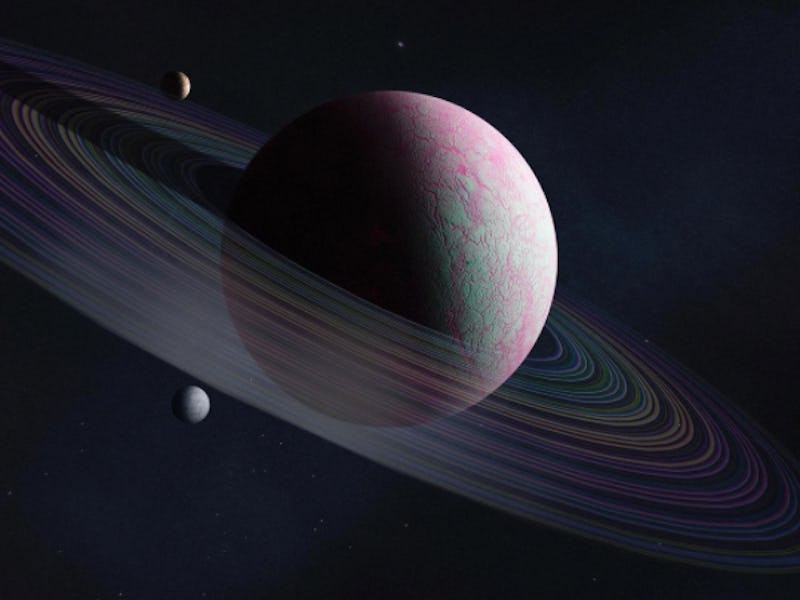It takes a great deal of thought to imagine what an entirely new planet would look like, with its own unique sun, moons, and place in the vast universe. Now, imagine dreaming up a thousand of them.
That is the intergalactic mission that Adam Makarenko has set out on. He has created over two hundred miniature exoplanets so far, all out of his home in Toronto.
Adam Makarenko's studio shows everything he uses to create these miniature worlds.
When astronomers research exoplanets, they are often left with nothing more than a set of data about its size and chemical makeup, leaving what they actually look like up to the imagination. Makarenko’s work is inspired by this research and the thought one or more of these planets could be habitable to life.
“I’m inspired by scientific data,” Makarenko told Inverse. “We’ve never seen exoplanets, just their signature. So, we know they exist, but we only ever see conceptual renditions of the planet. It’s really all speculative.”
To create the miniature exoplanets, Makarenko starts with a sphere, usually made of plaster or Styrofoam, and begins adding paint, glue, moss, and anything else he can get his hands on. Once it resembles a planet, he puts it on a backdrop, also created by hand. The landscape below is made out of sodium silicate crystals, which were actually grown on the set.
Makarenko's probe sphere depicted above was created using real crystals.
Once the sets are completed, which can take several weeks, he begins photographing his planets alongside them. The images are actually composites of several long exposure photographs. He does most of his work in camera, so nothing is animated or photoshopped.
“The reason for doing it all in camera is to have control over the final image,” said Makarenko. “I don’t want to do too much in photoshopping. So all the aspects you see are in camera. The lighting, the rings, the moons, the landscapes, everything.”
Once the planets are complete, he names them based off what number they are in the project and what perspective he shot them in.
Makarenko sees the 1000 mini worlds project as a test to expand his artistry. “I’m always trying to do something different the next time and it’s hard to do because I keep doing the exact same thing over and over,” he said. “It challenges my mind as an artist and begs the question: how many times can you do one thing?”
When Makarenko’s experiment in reimagining is complete he plans to create a book of all the best images. For now, though, he focuses on accomplishing one exoplanet a day.
“By the time I reach a thousand,” he said, “I imagine there will be a visible evolution in the work, and that’s what really keeps me going.”
